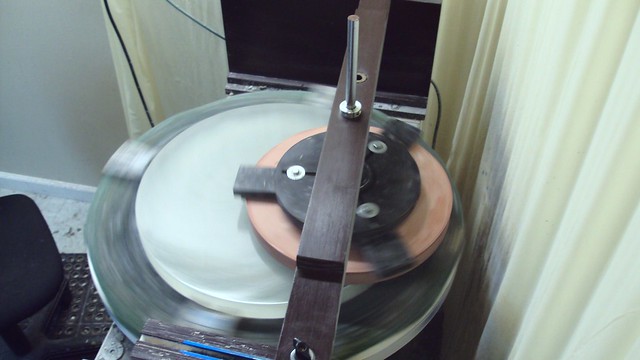20" F4.5 Mirror Fabrication
Waite Research delivers the heart of another 20" instrument
This 20" F4.5 mirror is something of a transition piece for Waite Research. In hindsight, it marks the end of the "ladder-needed" telescope mirrors, as this is the last mirror we fabricated at the longer F4.5 focal ratio. That's not to say we'll never be building another longer mirror, but our clients sure do like the newer designs we've innovated recently, with mirrors down to F3.0 now. Of course it's funny to look at the history of this progress. When we first started producing commercial premium-grade mirrors, the typical build was a 20" F5 mirror. We build just a few of those before taking it down to F4.5 to get a shorter telescope.
At the time, some folks commented whether F4.5 was just too fast--and, for good reason. Ten years ago there were not many opticians who could make a good 20" F5, let alone the more difficult F4.5. So people looked through a few poor instruments (from their tall ladders) and doubted whether opticians were up to the task of making them shorter. We had to convince people to give the shorter mirrors--made with new techniques--an honest try. But as we shipped more and more shorter-focus 20" and 24" mirrors, people definitely saw that "premium" quality could include the fast mirrors. Now we've busted down the barriers, and create fantastic large mirrors all the way down to F3.0. So this 20" F4.5 seems, perhaps, to be the last of an era.
In any case, we pulled out all the stops on this particular mirror to produce a fabulous example of the mirror-making art. This blank started at Newport, where it was Blanchard ground flat on the back, and generated to the 180" radius. We created a tile/plaster tool to match, and went to work using fixed-post grinding and polishing methods on our workhorse grinding machine.
The images in the slide show display some of the features of fixed-post grinding. Notice how the 75% diameter grinding tool is offset, so the edge of the tool hangs out over the edge of the mirror. As the turntable spins, it's only the friction between the disks and the abrasive that turns the grinding tool on top and initiates the grinding action on the mirror. This mirror got some special treatment going down through the fine grinding stages. The grinding sequence was 25-micron, 12-micron, and 9-micron then finishing with 5-micron.
The mirror was rough polished using high-speed fixed-post polishing on a 75% pitch polisher. Rough parabolization was handled with a 40% lap to rapidly move the mirror away from spherical and toward the paraboloid we wanted. A series of smaller polishers and premium-grade cerium oxide were used to put the final figure on this piece, and get it ready for a coating by Jeff Decker at Majestic.
After figuring, we performed a multiple-pass, multiple-diameter Foucault test and fed the numbers into FigureXP for data reduction. The FigureXP software calculated the Surface RMS error at 2.4 nm. The Strehl ratio was given as 0.997 for this particular test. And the mirror's P-V wave rating on the wavefront was slightly better than 1/32nd wave, as calculated by FigureXP. This mirror stands out as a particularly fine piece, far exceeding our statistical standards. As always, our technique is to improve the figure on every mirror until there can be no doubt about the premium quality of the surface.


